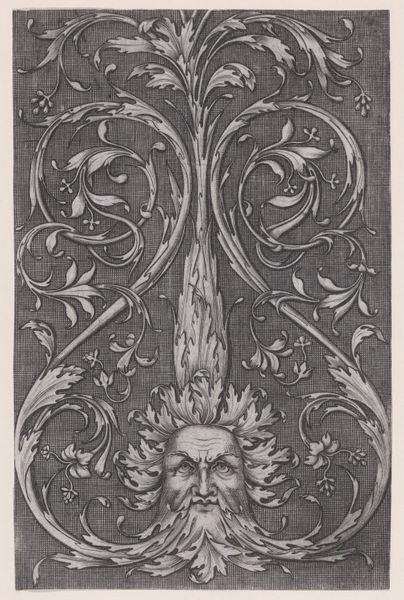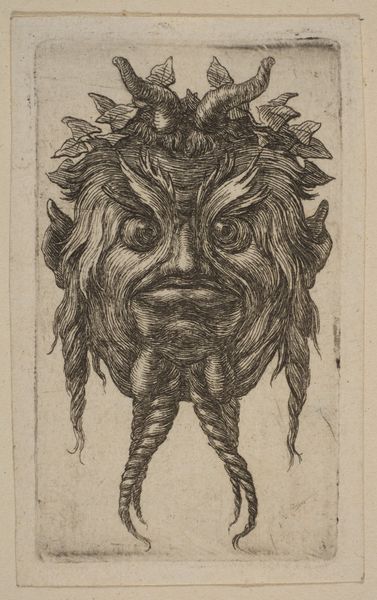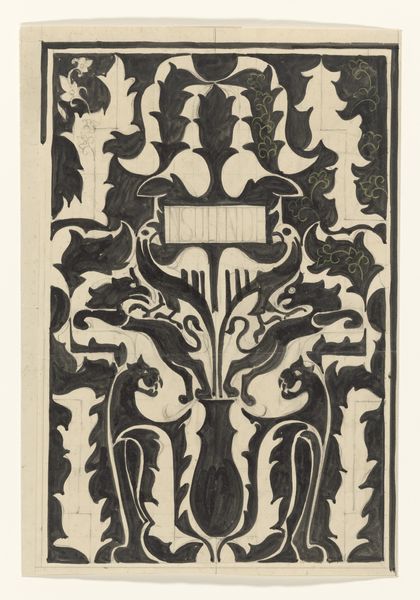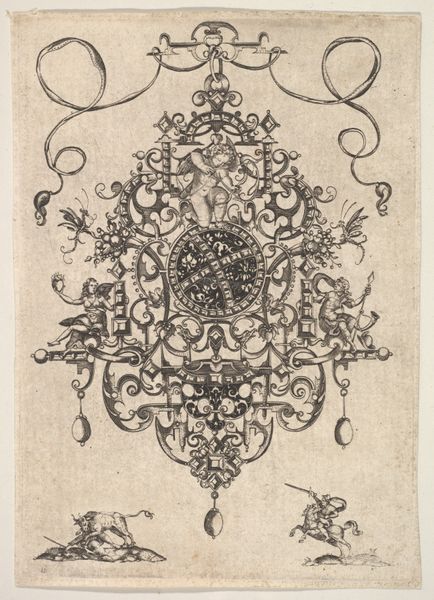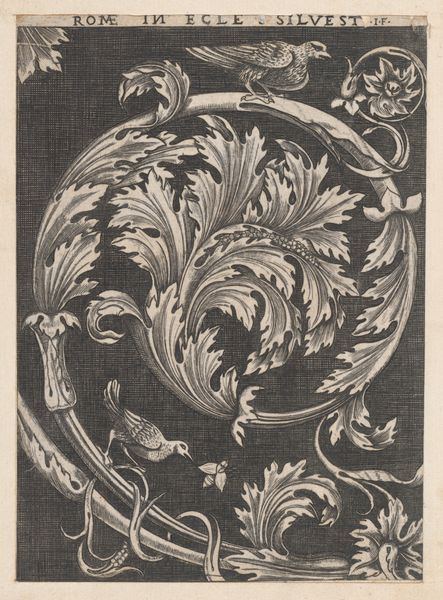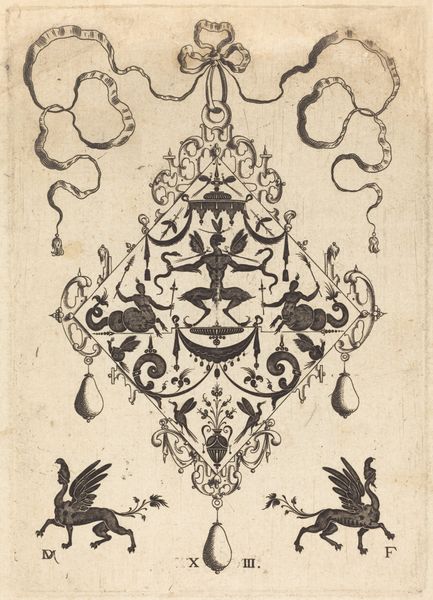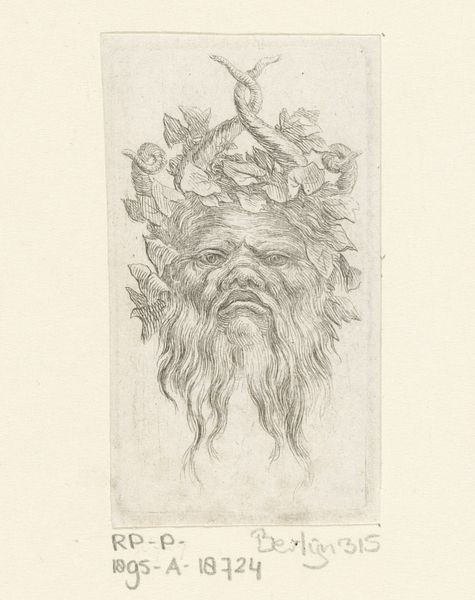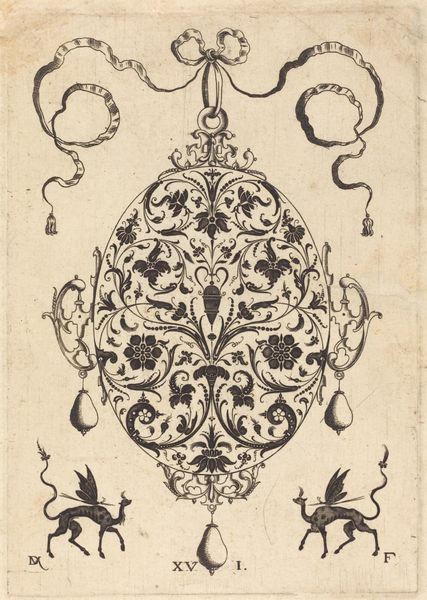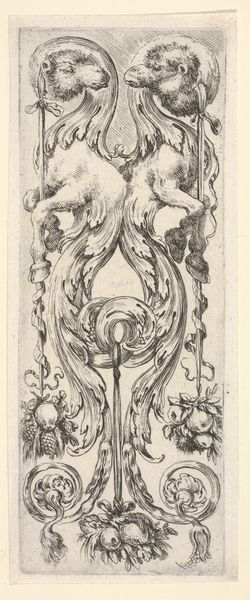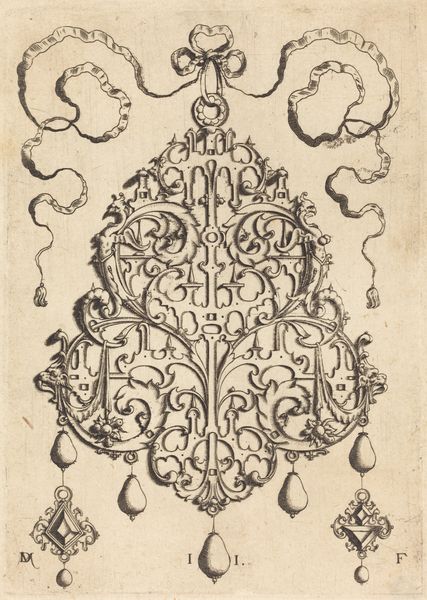
drawing, print, engraving
#
drawing
#
allegory
#
pen drawing
# print
#
form
#
11_renaissance
#
geometric
#
line
#
italian-renaissance
#
engraving
Dimensions: 8 1/4 x 5 3/8 in. (21.0 x 13.6 cm)
Copyright: Public Domain
Curator: Let's turn our attention to this "Ornamental Panel" crafted by Agostino Veneziano, dating from around 1514 to 1536. It's an engraving, currently held at the Metropolitan Museum of Art. Editor: Oh, quite striking! My immediate sense is of meticulously wrought tension. That face emerging from the foliage is rather fierce. It almost feels claustrophobic with its tightly interwoven botanical motifs. Curator: Absolutely. Ornament prints like this played a crucial role in disseminating artistic styles during the Renaissance. Consider how such engravings were used – often as guides for artisans crafting everything from furniture to metalwork. The "grotesque" style, drawing on ancient Roman designs rediscovered during that era, allowed a decorative trend to sweep through the European artistic landscape. Editor: It's fascinating to think about its function as a template. This was a reproducible, functional artwork that bridged the gap between artistic invention and artisanal production. Were these prints widely available, affordable for most workshops? I’m curious about how widely the aesthetics would have spread due to pricepoint and if any craftspeople may have even innovated different, hybrid grotesque styles. Curator: Good point. Access certainly wasn’t universal. Guilds and wealthy workshops likely held a greater concentration of these prints. So yes, the potential for derivative and localized styles definitely existed as these circulated, with interpretations varying across workshops and regions. It really makes you consider the artistic ownership as ideas circulate. Editor: That face staring out, rooted in foliage, is also so interesting. It raises questions around human's relationship to nature and what's at play when imposing form onto natural elements. Curator: Right. This almost aggressive, anthropomorphic depiction highlights the Renaissance fascination with controlling and shaping the natural world to reflect a humanist viewpoint. But this piece reflects an idea of order, rather than actual growth, in the face. Editor: Precisely. These linear compositions almost feel at odds with the unruly character of the depicted subject of organic material, highlighting how design impacts and transforms the nature and process. Food for thought about how human intervention alters materials at even an ornamental level! Curator: Indeed, thinking of art as intervening on nature at the design and even consumer level highlights some interesting commentary and perspectives from this historical work. Editor: I think I'll always remember the sheer force of that leafy face staring back. It provokes a kind of uncomfortable acknowledgement, the audacity to even have design over nature.
Comments
No comments
Be the first to comment and join the conversation on the ultimate creative platform.
